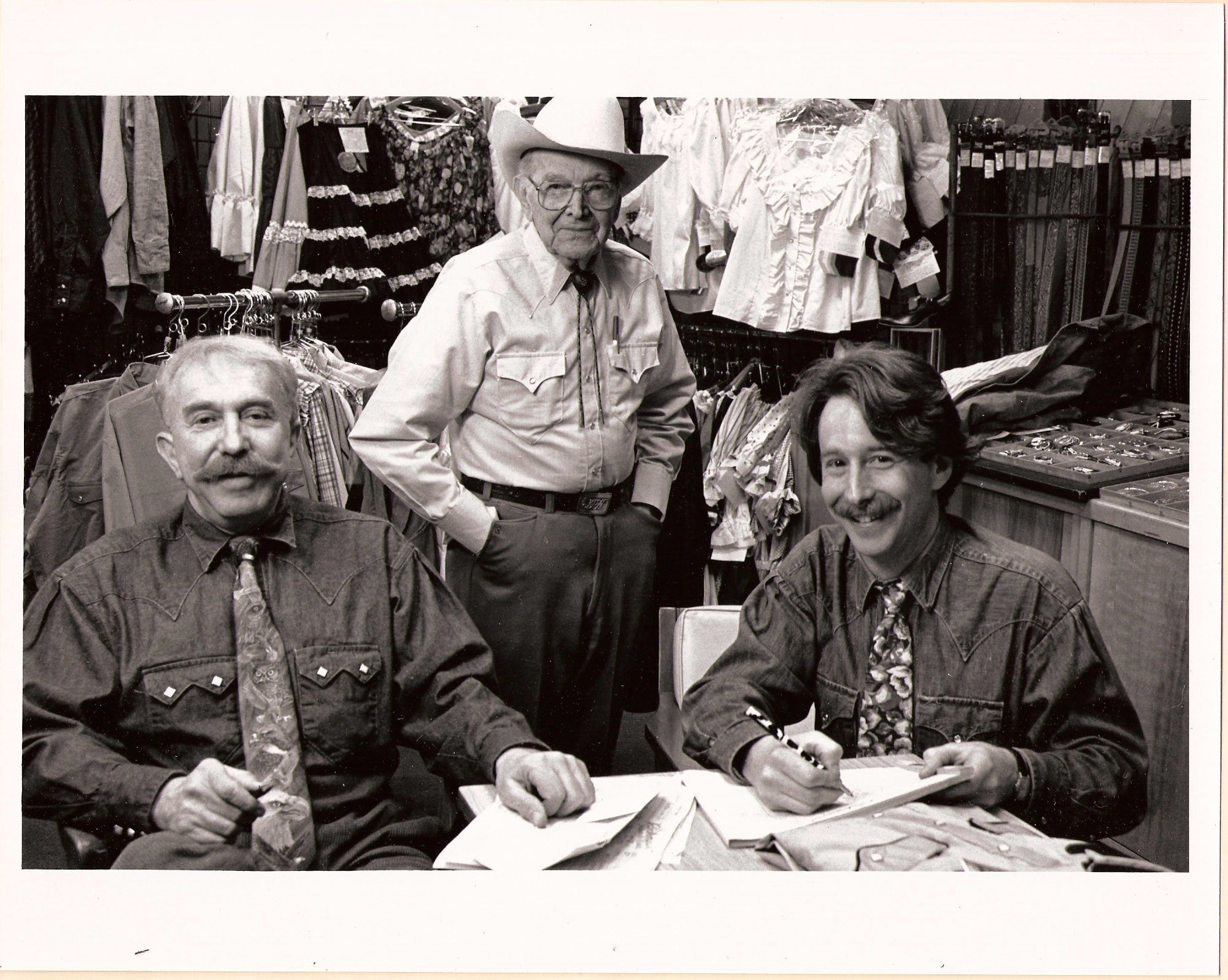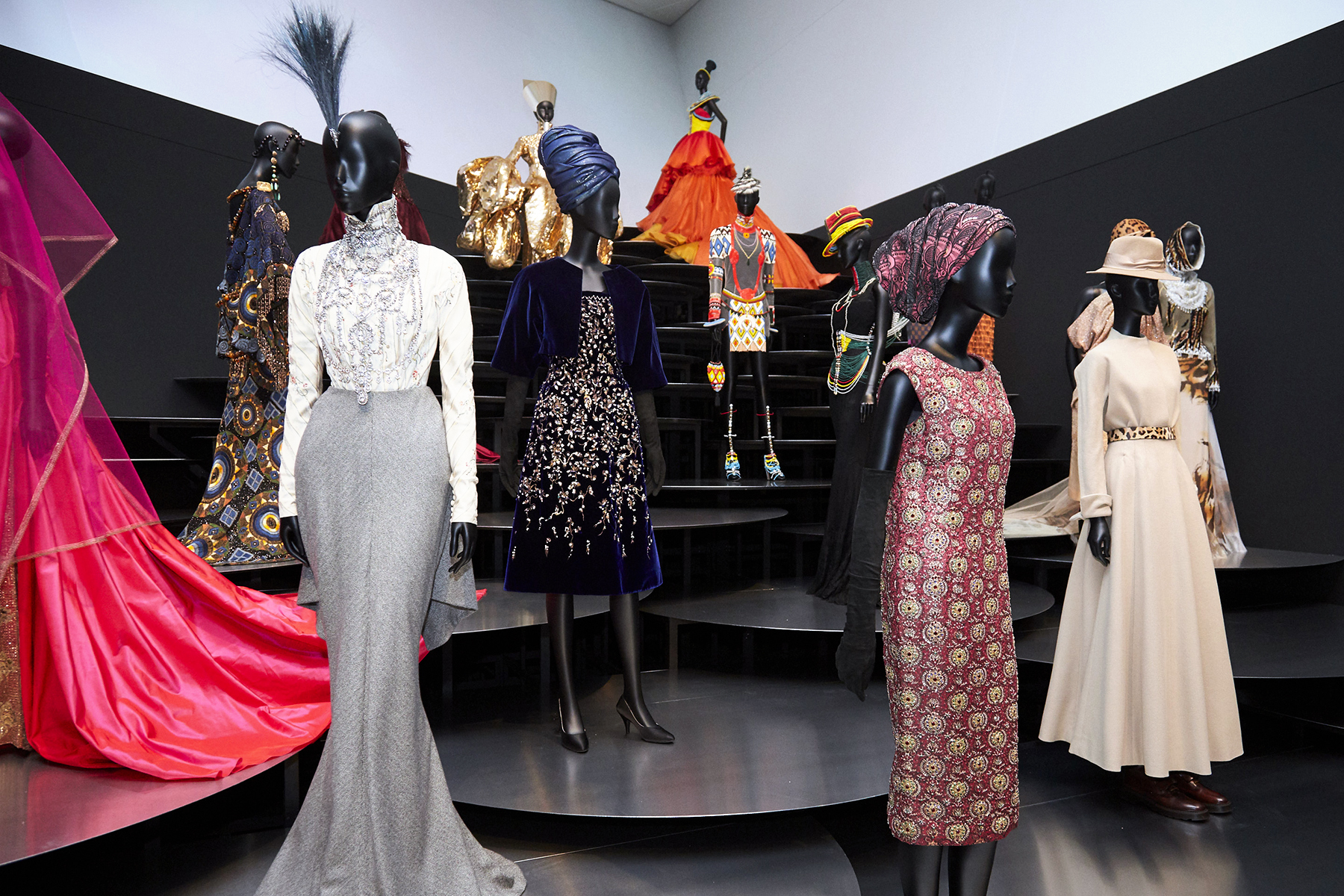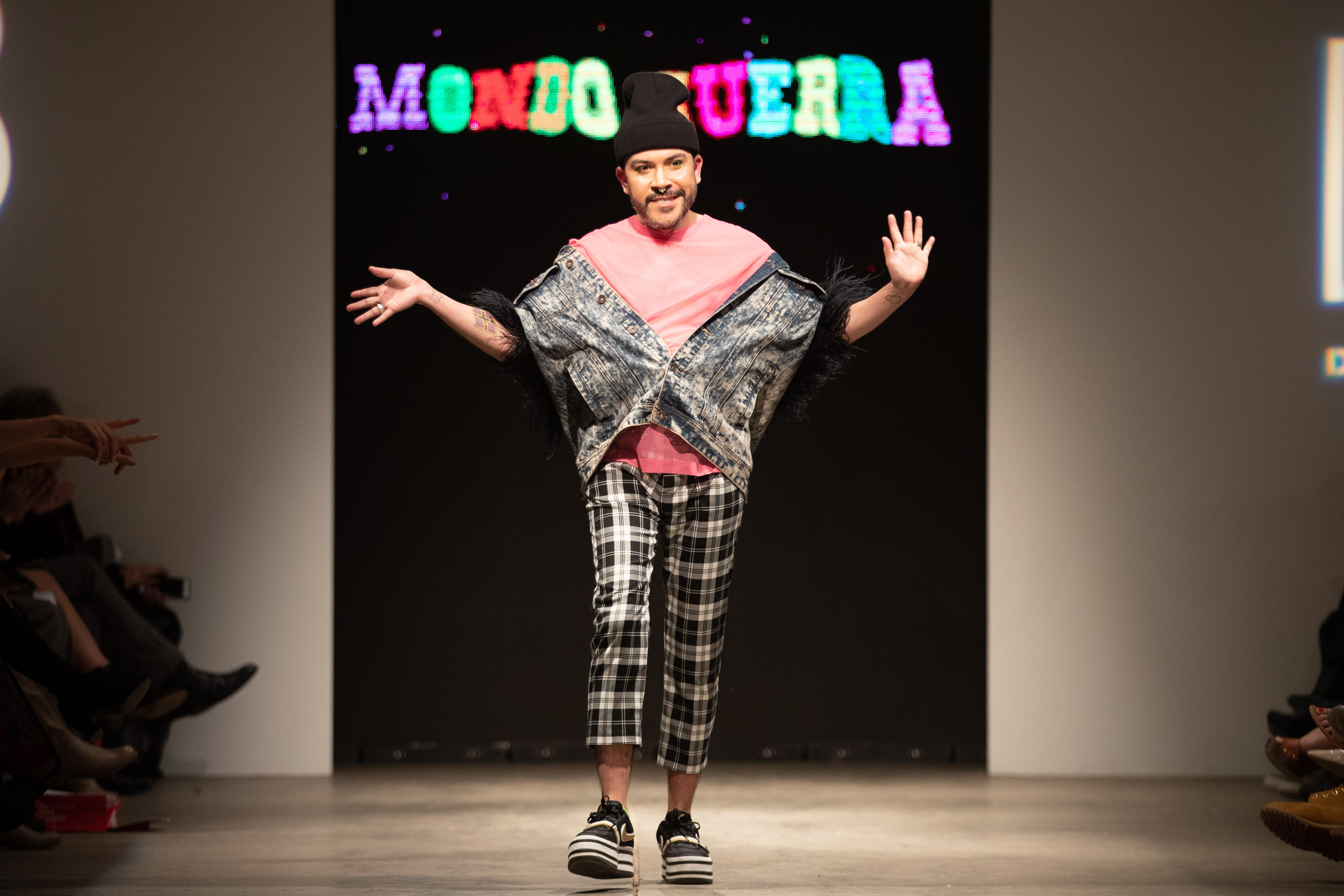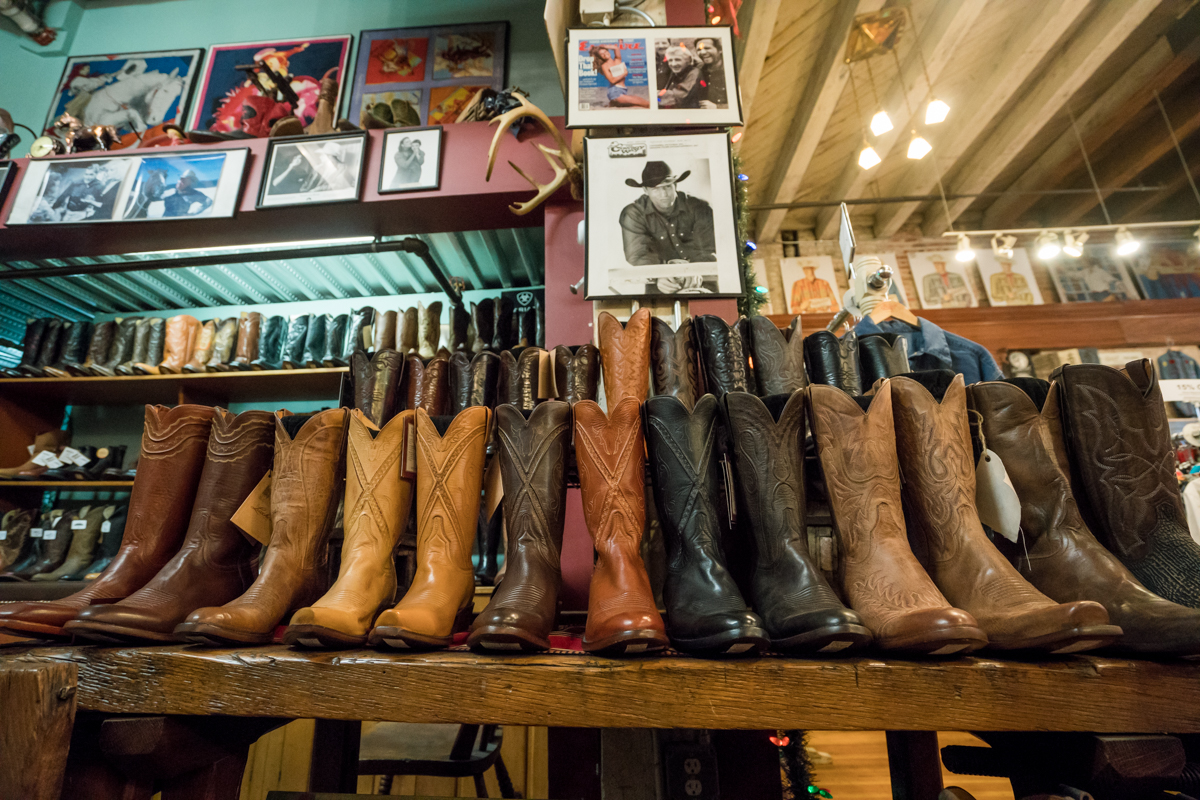Since its establishment in 1858, Denver has been a land of promise. Brave settlers descended on the territory in droves, often armed with nothing more than the hope that they would find fortune on the Front Range of the Rocky Mountains. Early inhabitants likely didn’t think much of their fashion choices, but in a way, they were laying the foundation for Denver’s fashion identity. These pioneers — outfitted in tough leather boots, dungarees and Stetsons to withstand the elements of their new homestead — unwittingly established Denver’s practical fashion sense purely by evolving to fit the Colorado lifestyle. They set a standard, one that inextricably links what Coloradans wear to how we live in a meaningful way.
Today, this once-wild expanse of land is still full of promise, making its way onto the global fashion map. In fact, Forbes recognized the city’s official fashion event, Denver Fashion Week (DFW), as a new frontier, providing an opportunity for emerging designers to find their creative voice and showcase their work. Notable brands have also recognized the city as an epicenter of fashion business. The Denver Art Museum hosted the largest Dior collection outside of France in the 74-year history of the fashion house and major fashion conglomerate, VF Corp, recently relocated its headquarters to Denver.
As Denver continues to make a name for itself in the fashion industry, it’s important to take a look back. People like Jack Weil of Rockmount Ranch Wear, longtime South Broadway fashion businesses and current fashion trailblazers Florence Müller (the Denver Art Museum (DAM) Avenir Foundation Curator of Textile Art and Fashion), and local designers are all bricks within the foundation of Denver’s fashion identity. Much like the pioneers of the city itself, there are modern pioneers of Denver’s fashion history. It behooves us to collectively explore the cultures that formed how we, as a community, express ourselves today.
Rockmount Ranch Wear
When you think of Denver fashion of years past, western wear probably comes to mind. Colorado ranchers and farmers needed functional clothing and 75 years ago, the Weil family started Rockmount Ranch Wear on Larimer Street to fill that void.
“Western fashion as we know it largely began in the 1940s and movies and music helped popularize it. Early [Western] fashion started out handmade and then became commercial with Rockmount and other companies,” said Steve Weil, president and chief creative officer of Rockmount, as well as Jack’s grandson. He continued, “The fabrics were natural for the most part — wool, cotton and rayon. This changed with the advent of synthetic fabrics in the ’60s and peaked with the [release of] Urban Cowboy in the early ’80s with something very costume-like. This was when Western became mainstream for the first time.”

As we look at Denver fashion and the evolution of Rockmount Ranch Wear through a modern lens, the words that come to mind are not simply “nostalgia” but “innovation” as well. Rockmount clothing is not only featured in the Smithsonian and the Autry Museum of the American West for its significant place in history, but celebrities like Eric Clapton, Robert Plant and David Bowie were Rockmount customers. The brand’s “Cannabis Cowboy Western Shirt,” embroidered with the Mile High City’s unofficial foliage, also garnered the brand national attention in recent years. It’s clear that Rockmount has been reinventing itself for decades and is now a brand known, worn and sold in countries around the world. “Fashion is organic and evolving, same as always. Rockmount has over 100 shirt styles so there is something for everyone,” said Weil.
The Influence of Florence Müller

In 2015, Florence Müller officially joined the DAM as the Avenir Foundation Curator of Textile Art and Fashion, a job that required her to relocate from France to Denver. She was familiar with our fair city as she curated the Yves Saint Laurent Retrospective at the DAM in 2012. During her first stay, Müller was impressed by the spirit of the city, noting in an interview with the DAM, “Denver is a city full of fresh energy and vitality, connected with its traditional roots.” As the DAM’s Avenir Foundation Curator of Textile Art and Fashion, Müller oversees the Neusteter Textile Collection housed at the Textile Art Gallery. Part of her strategy is to grow the museum’s collection and bring in more modern costume and fashion from the 20th and 21st centuries.
Müller has a very full resume, to say the least. She is a fashion historian (specializing in the culture of fashion and history of costume), former director-curator of the Union Française des arts du Costume and associate professor at the Institut Français de la Mode. Throughout her career, Müller has curated more than 100 exhibits in Europe, Asia and the US, This includes several Dior exhibits that paved the way for the DAM’s recent exhibit, the largest ever outside of Dior’s home country of France.
Thanks to Müller’s contributions to the DAM, bringing international fashion exhibits to Denver has elevated the city in the eyes of the broader fashion community. Not to mention, exhibits like Shock Wave: Japanese Fashion Design, 1980s–90s, Yves Saint Laurent: The Retrospective and Dior: From Paris to the World offer Denverites the opportunity to experience fashion in a way we might not otherwise have access to.
In 2012, Müller was hand-selected by Pierre Berge, Yves Saint Laurent’s longtime partner and co-founder of the house, to curate Yves Saint Laurent: The Retrospective. The DAM was chosen as the only venue in the US to house this exclusive and all-encompassing exhibit. The retrospective was a look back on the designer’s 40-year history and featured more than 200 haute couture garments along with numerous photographs, drawings and films. These priceless pieces illuminated the history of the designer’s work and the development of his signature style.
The scale of the exhibit was immense, but the archives to choose from were even more massive. Müller whittled the exhibit collection down from 15,000 pieces to 500, while simultaneously keeping Saint Laurent’s story intact. Every piece in the exhibit was flown from Paris and it took Müller and her team over two weeks to install all of the artwork, textiles and accessories. “Going through the archives was a long and passionate journey,” explained Müller in her DAM interview. “To understand how this process is exceptional, you have to imagine that there is no other example of a museum devoted to one couturier with such a large archive.”
To date, there have been two other YSL retrospectives in North America since 1980 — at the Metropolitan Museum of Art in 1983 and the other in 2008, shown at the Fine Arts Museum of Montreal and San Francisco’s de Young Museum. What set the Denver exhibit apart from its predecessors is the breadth of the display.
For this, Müller’s intention was to show the entire Yves Saint Laurent picture — the man and the house and tell its incredible story. At the time, it seemed Denver was the best place to tell the story of a man that was larger than life. When asked about why DAM was chosen, Müller explained in an interview with the museum, “Denver seems to have no limits; the sky is gigantic; the light intense. There is a strong feeling of freedom with the unlimited scale of the landscape — one can feel small in the immensity of the world.”
From the fall of 2016, through the spring of 2018, the DAM hosted another Müller-curated exhibit, called Shock Wave: Japanese Fashion Design, 1980s–90s. The exhibit showcased work by Japanese designers who started a fashion revolution in Paris during the 1980s and 1990s. More than 70 looks from iconic designers such as Issey Miyake, Kenzo Takada, Kansai Yamamoto, Yohji Yamamoto, Comme des Garçons and Junya Watanabe were featured in the exhibit. Müller played with the intersection of tradition and modernity, the influence of pop-culture on the designs, the use of oversized and abstract shapes and showcased collaborations between contemporary artists and fashion designers.
More importantly, through these designers’ work, Müller demonstrated how Japanese designers interpreted the work of their European predecessors and influenced a new class of designers into the ‘90s and beyond.
Shock Wave was Müller’s first exhibition in her current role at the DAM and showcased her pull within the fashion history world. The exhibit displayed 20 recent acquisitions for the DAM’s collection and featured loans from the fashion collections of the Los Angeles County Museum of Art and the de Young Museum in San Francisco, as well as from local and national private lenders.
Last year, the DAM hosted the largest-ever Dior exhibit in the United States and due to high demand, Dior: From Paris to the World, was extended for two additional weeks, proving Denverites have an appetite for couture fashion and iconic designers.

Throughout the exhibition, Müller, was surprised by the range of attendees, attributing Denver’s response to the sense of collaboration at couture fashion’s core. “An audience that you wouldn’t think would be attracted to [Dior] came to see the exhibit. They appreciated the beauty, the know-how, the passion, the work, the couturiers. Couture is an art form that speaks to our time. Painting is solitary, while couture is a huge team. It’s collaborative.”
Müller explained that even though Dior’s “New Look” in the 1940s was a nostalgic nod to fashion’s past, Christian Dior was fascinated by modernity and contemporary architecture. “If Christian Dior was still alive, exploring a new territory like Denver would have intrigued him.” She went on to say that the contrast of Dior’s historic silhouettes, set against a backdrop of contemporary architecture was the perfect setting for the exhibit.
According to Müller, Denver is a fashion city in progress and will continue to grow as “people are traveling so much these days and shopping online. People enjoy fashion here. They want to look better, they want to be fashionable and are proud of their look”.
The DAM has become more internationally inclined and will likely continue to draw in more international fashion influence. This is, in large part, thanks to the work Müller has achieved in the short time she has graced our city with her presence.
Denver Fashion Week

Forbes named DFW “a trusted alternative to New York as a platform for emerging talent” and all signs point to the show continuing to gain momentum. Former DFW co-producer and Denver hairstylist, Charlie Price, explained, “We are beginning to get international recognition and coverage, plus more and more designers from all over the world are reaching out to show with us.”
READ: Denver Fashion Week Was Named An Alternative to New York Fashion Week By Forbes
Denver designer and DFW participant, Tyne Hall, sees the show as a pillar of the art community. “DFW has become a fixture, not just of Denver fashion, but of the arts and cultural scene. It has strengthened the arts in Denver and created a space for so many artists to showcase their work,” she explained.
DFW aims to celebrate all the artists involved — designers, hairstylists, models, photographers and makeup artists. DFW is a performance and that entertainment factor is catching on. Hall continued, “I think what is really unique about DFW is the recognition of everyone in the show. You see not only the designers’ work being elevated but also that of the hairstylists, makeup artists, models and photographers. It’s truly a week of brilliant artistry.”
Price and Hall went on to call out the unique talent of DFW designers. “I love the creativity and ingenuity of Denver designers. We are always looking to be the most creative and unique rather than chasing what you see in mainstream fashion. Every designer has a sense of who they are.” Price echoed this sentiment noting, “I love seeing fashion designers develop their style and point of view. In Denver, I think there is an independent streak — we are in the Wild West after all.”
As the event continues to grow in attendance and popularity, the national exposure of Denver’s talented designers grows as well. After his near-win on Project Runway in 2010, local designer, Mondo Guerra, brought Bravo’s digital spin-off show, Runway Remake, to Denver in 2019, which brought even more of a national fashion gaze onto the city. Price attributes this recognition from outside authorities to the success of DFW. “It has given local sartorial talents a unique platform on which to shine for all the world to see.”

Denver Fashion Week serves as a platform to uplift local designers and provide a stage for many talented people to showcase their work. As a result, local designers have the opportunity to jumpstart their careers and further cement Denver’s fashion identity. Electric Bubblegum designer, Mariah Hodges, explained that she began her line here because of her family, but stayed because of the creative atmosphere. “Even though I started this brand here because of family, I felt it would be a great place to grow an up-and-coming fashion brand. And Denver fashion week has been a great support!”
The Future: New Designers
As outside forces continue to pour into the city, bringing new takes on food, architecture and of course, fashion, it’s important to highlight the designers that continue to transform the landscape. These designers stand on the foundation of what these early pioneers built and allow this spirit to live on in their own creations.
Denver fashion would not be what it is today, without the creativity of POC-owned brands and POC designers. Crystal Lee, founder of C.R. Lee, has been recognized abroad for her designs and featured on numerous runways and in fashion magazines. When Lee was starting out, she was looking to uplift women who didn’t feel seen. “As a new designer, I just wanted to create the things I wish existed. That meant good quality, unique, fun and innovative ready-to-wear. At first I focused on ‘real women’. At that time ‘real women’ meant curves.” Now, thanks in large part to her work, the definition of real women has expanded to mean any and all women, of all shapes and sizes. Lee has brought an international gaze upon Denver fashion, further laying the groundwork for Denver’s expansion as a fashion city with a strong identity.
“I’m excited about Denver fashion,” said Lee. “I think as Denver gets even more comfortable as a major city and with all of the migration here, I believe our fashion scene will truly be unique and ones to watch.”
With support from people like the Weil family, Florence Müller, designers who call Denver home and so many others, Denver’s fashion identity continues to evolve, much like the city itself. Denver fashion was created out of utility and practicality and while it maintains these roots, it has started to flourish, thanks to the opportunities coming to our city. “I think events like DFW and the fashion exhibits at the Denver Art Museum have really helped to bring attention to the fashion industry, both on a local and international level” said fashion stylist, editor and Denver native, Georgia Alexia Benjou, who is also working to grow the industry here, launching a brand new concept with business partner, Kristin Priou, called Short Story.
Finally, it’s important to mention the increase in new residents from all over the country (and beyond) that contribute their own unique style to our city. Price explained that Denver fashion “feels like Denver itself. The pioneer spirit comes through. We aren’t trying to be anything other than ourselves: unpretentious, confident and free in spirit.”
As we reflect back on Denver’s identity, it’s important to look back on the people and events that have led us to this point and contributed to our modern identity. Denver’s pioneer spirit can still be seen in the evolution of Western wear, the growing authority of DFW, the local designers who started it all and the fledgling designers who made a new home here. Denver’s fashion identity is a unique blend of elements that could only happen right here, right now. Functionality, utility and plenty of self-expression, not to mention international influence and a spotlight on local art, blend to create the soul of Denver fashion.






